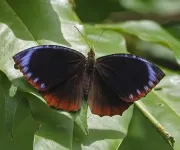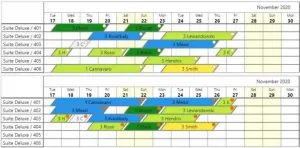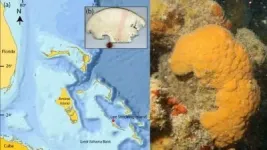(Press-News.org) ATLANTA--Compared to standard machine learning models, deep learning models are largely superior at discerning patterns and discriminative features in brain imaging, despite being more complex in their architecture, according to a new study in Nature Communications led by Georgia State University.
Advanced biomedical technologies such as structural and functional magnetic resonance imaging (MRI and fMRI) or genomic sequencing have produced an enormous volume of data about the human body. By extracting patterns from this information, scientists can glean new insights into health and disease. This is a challenging task, however, given the complexity of the data and the fact that the relationships among types of data are poorly understood.
Deep learning, built on advanced neural networks, can characterize these relationships by combining and analyzing data from many sources. At the Center for Translational Research in Neuroimaging and Data Science (TReNDS), Georgia State researchers are using deep learning to learn more about how mental illness and other disorders affect the brain.
Although deep learning models have been used to solve problems and answer questions in a number of different fields, some experts remain skeptical. Recent critical commentaries have unfavorably compared deep learning with standard machine learning approaches for analyzing brain imaging data.
However, as demonstrated in the study, these conclusions are often based on pre-processed input that deprive deep learning of its main advantage--the ability to learn from the data with little to no preprocessing. Anees Abrol, research scientist at TReNDS and the lead author on the paper, compared representative models from classical machine learning and deep learning, and found that if trained properly, the deep-learning methods have the potential to offer substantially better results, generating superior representations for characterizing the human brain.
"We compared these models side-by-side, observing statistical protocols so everything is apples to apples. And we show that deep learning models perform better, as expected," said co-author Sergey Plis, director of machine learning at TReNDS and associate professor of computer science.
Plis said there are some cases where standard machine learning can outperform deep learning. For example, diagnostic algorithms that plug in single-number measurements such as a patient's body temperature or whether the patient smokes cigarettes would work better using classical machine learning approaches.
"If your application involves analyzing images or if it involves a large array of data that can't really be distilled into a simple measurement without losing information, deep learning can help," Plis said.. "These models are made for really complex problems that require bringing in a lot of experience and intuition."
The downside of deep learning models is they are "data hungry" at the outset and must be trained on lots of information. But once these models are trained, said co-author Vince Calhoun, director of TReNDS and Distinguished University Professor of Psychology, they are just as effective at analyzing reams of complex data as they are at answering simple questions.
"Interestingly, in our study we looked at sample sizes from 100 to 10,000 and in all cases the deep learning approaches were doing better," he said.
Another advantage is that scientists can reverse analyze deep-learning models to understand how they are reaching conclusions about the data. As the published study shows, the trained deep learning models learn to identify meaningful brain biomarkers.
"These models are learning on their own, so we can uncover the defining characteristics that they're looking into that allows them to be accurate," Abrol said. "We can check the data points a model is analyzing and then compare it to the literature to see what the model has found outside of where we told it to look."
The researchers envision that deep learning models are capable of extracting explanations and representations not already known to the field and act as an aid in growing our knowledge of how the human brain functions. They conclude that although more research is needed to find and address weaknesses of deep-learning models, from a mathematical point of view, it's clear these models outperform standard machine learning models in many settings.
"Deep learning's promise perhaps still outweighs its current usefulness to neuroimaging, but we are seeing a lot of real potential for these techniques," Plis said.
INFORMATION:
Philadelphia, January 14, 2021--Based on preclinical studies of an investigational drug to treat peripheral nerve tumors, researchers at Children's Hospital of Philadelphia (CHOP) as part of the Neurofibromatosis Clinical Trials Consortium have shown that the drug, cabozantinib, reduces tumor volume and pain in patients with the genetic disorder neurofibromatosis type 1 (NF1). The results of the Phase 2 clinical trial, co-chaired by Michael J. Fisher, MD at CHOP, were published recently in Nature Medicine.
"This is the second class of drugs to demonstrate ...
Many animal and insect species use Batesian mimicry - mimicking a poisonous species - as a defense against predators. The common palmfly, Elymnias hypermnestra (a species of satyrine butterfly), which is found throughout wide areas of tropical and subtropical Asia, adds a twist to this evolutionary strategy: the females evolved two distinct forms, either orange or dark brown, imitating two separate poisonous model species, Danaus or Euploea. The males are uniformly brown. A population group is either entirely brown (both males and females) or mixed (brown males and orange females).
City College of New York entomologist David Lohman and his collaborators studied the genome of 45 samples representing 18 subspecies across Asia to determine ...
While new research from West Virginia University economists finds that presidential inaugurations have gained popularity as must-see tourist events in recent years, major security threats will keep visitors away for the inauguration of President-Elect Joe Biden.
Published in "Tourism Economics," the study, by Joshua Hall, chair and professor of economics, and economic doctoral student Clay Collins, examined the impact of the inaugurations of Barack Obama and Donald Trump on hotel occupancy in the Washington, D.C.-area.
Daily occupancy rates around the inaugurations were four-to-six times higher than the next largest event in the sample. The research team also concluded ...
To achieve full occupancy, hotels used to rely exclusively on experience, concentration and human abilities. Then came online booking, which made the reservation collection process faster, but did not solve the risk of turning down long stays because of rooms previously booked for short stays.
To avoid overbooking (accepting more reservations than there is room for) in some cases online sales are blocked before hotels are completely booked. The solution that the University of Trento has just discovered could change the life of hotels by increasing the number of occupied rooms and, therefore, in the revenue of hotel owners.
For an average Italian hotel (50 rooms), ...
More than half of all university students in the United States have experienced high levels of psychological impact from the COVID-19 pandemic, according to a new study published in the open-access journal PLOS ONE by Matthew Browning of Clemson University, US, and colleagues.
University students are increasingly recognized as a psychologically vulnerable population, suffering from higher levels of depression, anxiety, substance abuse and disordered eating compared to the general population. Moreover, college students have been among the most strongly affected by COVID-19 because of uncertainty regarding academic success, future careers and social life during college, among other concerns.
In the new study, researchers collected data on 2,534 students ...
Investors who bet on tropical forest conservation and reforestation to solve global warming by storing carbon in wood face huge uncertainties because the science behind predicting carbon stocks is still shaky. Even the best Earth Systems Models fail to predict how carbon stored by tropical forests varies from place to place. The New Phytologist invites scientists doing the "most-exciting, ground-breaking research" to review timely topics in a way that non-scientists can understand. Helene Muller-Landau, staff scientist at the Smithsonian Tropical Research Institute (STRI) was chosen to write the authoritative Tansley Review ...
MIAMI--Scientists used a 600-year-old marine sponge to reconstruct a record of ocean temperature in the North Atlantic revealing past volcanic activity as well as the current global warming trend from the release of carbon dioxide and other heat trapping gasses into Earth's atmosphere and absorbed by the oceans.
The University of Miami (UM) Rosenstiel School of Marine and Atmospheric Science-led research team used geochemical proxies to reconstruct a 600 year-long record of Atlantic Ocean temperatures from the skeleton of a sclerosponge (Ceratoporella nicholsoni).
The basketball-sized sclerosponge was ...
These findings validate the significance of the previously described first threshold - the point when the damage to the acinar cells of the pancreas is sufficient to trigger the infamous inflammatory cascade (Barreto and Saccone, 2010) - while highlighting the importance of a second threshold, namely the point when a person develops clinical symptoms of the disease sufficient to warrant going to hospital.
"This transcontinental collaboration of pancreatologists drew on their vast clinical and research experience spanning decades investigating the pathophysiology and treatments ...
Deep in the Brazilian Amazon River basin, scientists led by the Smithsonian's National Museum of Natural History fish research associate C. David de Santana discovered a small, river-fed lake filled with more than 100 adult electric eels, many of which were upwards of 4 feet long. On its own, this was an intriguing discovery, electric eels--a type of knifefish rather than true eels--were thought to be solitary creatures.
But in this lake along the banks of the Iriri River in Brazil's state of Pará, the researchers witnessed the eels working together to herd small fish called tetras into tightly packed balls. Then groups of up to ...
Underwater seagrass meadows may trap, extract and carry marine plastic debris to shore, thereby helping to remove plastic litter from the sea, according to a study published in Scientific Reports.
Previous research suggested that most plastics end up in the seafloor and that some are washed back to shore; however, how this occurs was unclear.
Seagrass meadows are widespread in shallow coastal waters and are involved in trapping and binding sediment particles that form the seabed. To assess the role that seagrass may have in trapping and removing marine plastic, Anna Sanchez-Vidal and colleagues measured the amount of plastic debris collected from seagrass litter ...





